“Wherever you go becomes a part of you somehow.”
- Anita Desai
Expanding Outward
Our view of sustainability has also been shaped by travel. Amy and I have prioritized the beauty and abundance of nature, whether scrambling on rainforest rocks to reach hidden freshwater pools on Maui, hiking the lakes and alms of Bavaria and Austria, or admiring the giant redwoods of California's Russian River Valley. We've been inspired by the formal majesty of the gardens at Versailles, Kew, Hampton Court, and Hidcote as much as we have by the wild fennel growing along Rt. 116 outside Guerneville, California or the informal quaintness of the untidy front courtyard of a residence in Creysse along the Dordogne River in France.
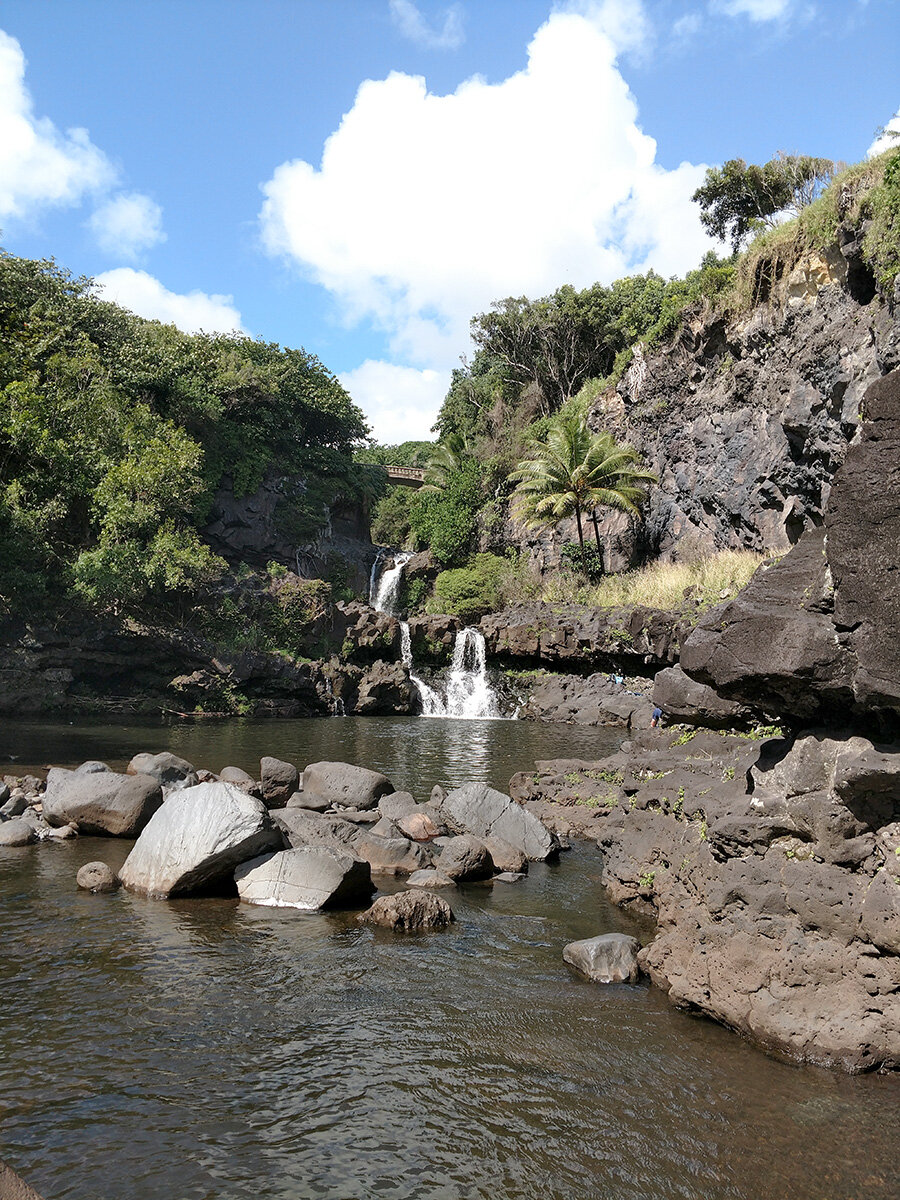
Ohe' o Gulch on Maui
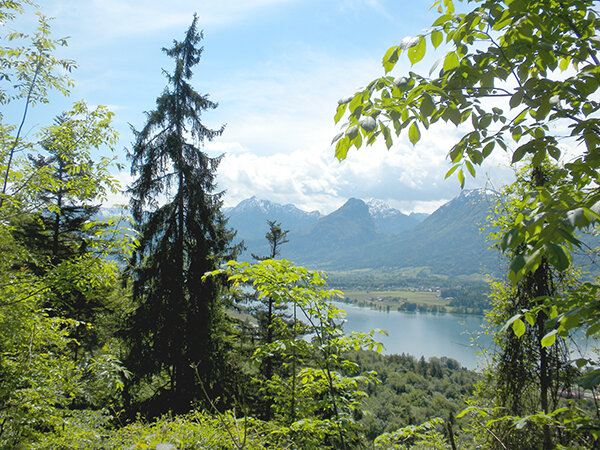
Wolfgangsee in Austria

Villandry

Hampton Court

Hidcote Manor Garden
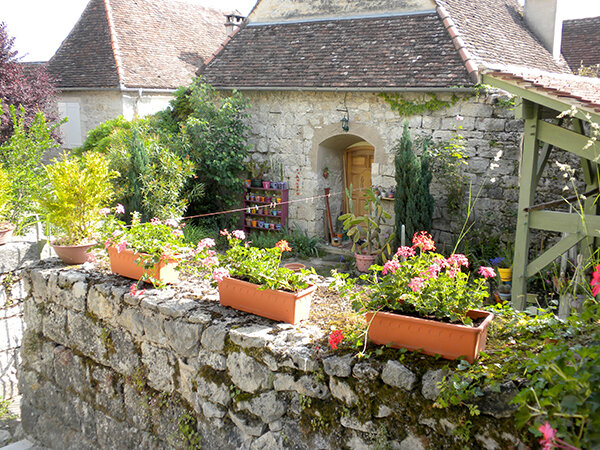
Creysse
Our current version of gardening—that is, moving beyond lawn care—really took hold when we visited France in 2009. There, in Villandry, I went completely berserk and spent an entire day in the herb garden, reproducing the layout in a notebook and taking a picture of every single herb and its label in a frenzy of excitement. A few years later in 2011, we visited Butser Ancient Farm in the UK, where I went nuts again after first seeing a proper hazel hurdle.
This experience eventually led me to research coppicing, which then led to purchasing my first willow "pencils" and planting them against the back lot line. For the last nine years, those two rows of willow have produced three compost bins, a handful of garden "torpedo" supports, a leaf bin, and countless hours of pleasure cutting, trimming, sorting, splitting, and building.

A portion of the picture paroxysm at Villandry

Butser Ancient Farm

Willow plant supports we made in the UK

Willow supports in Happy Boolo backyard

Willow hurdle

First compost bin made from split mulberry and willow

Splitting post
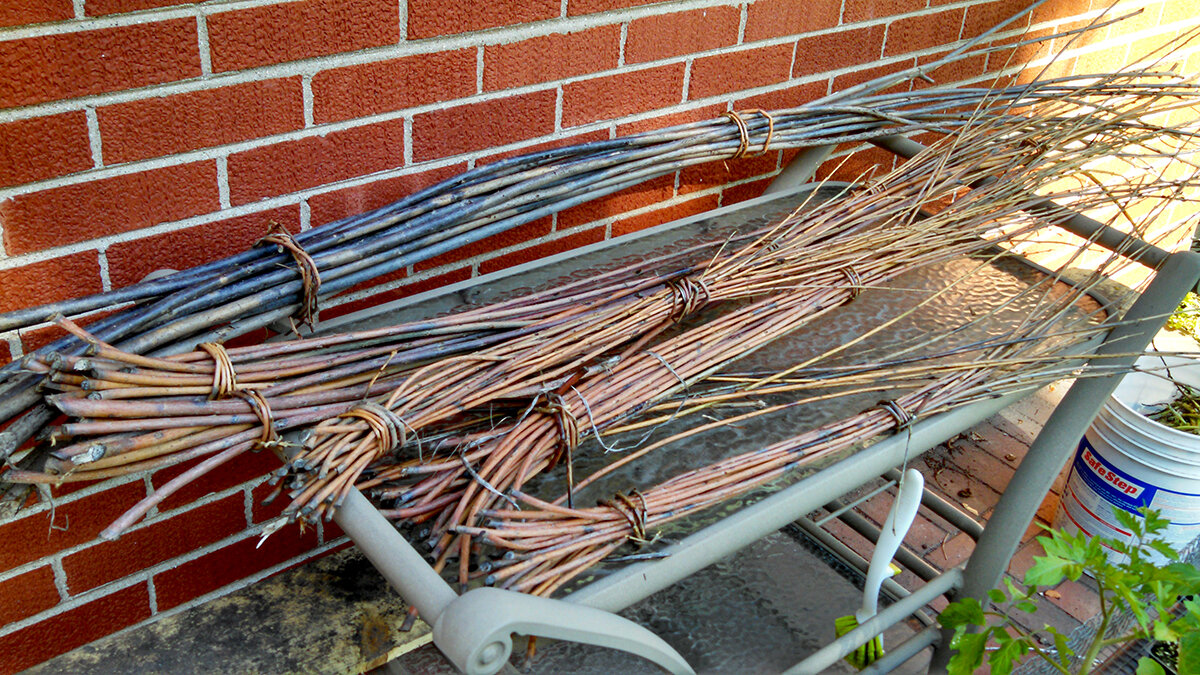
Sorted and ready for soaking

Braided willow row cover hoops
Our travels have always incorporated a farm visit or a farm-to-table experience, whether sampling coffee beans in upcountry Maui, trying miner's lettuce near a farm in northern California, or visiting the Boqueria in Barcelona to select squid spleen, chicken, and prawns for Catalan "surf and turf" in our instructor's home kitchen.

Polyface Farm's mobile chicken coops

Barcelona's Boqueria

Adding fish broth to stew in Chef Yves' kitchen

Seared ahi tuna salad with Chef Klio

Picking our own salad at O'o Farms
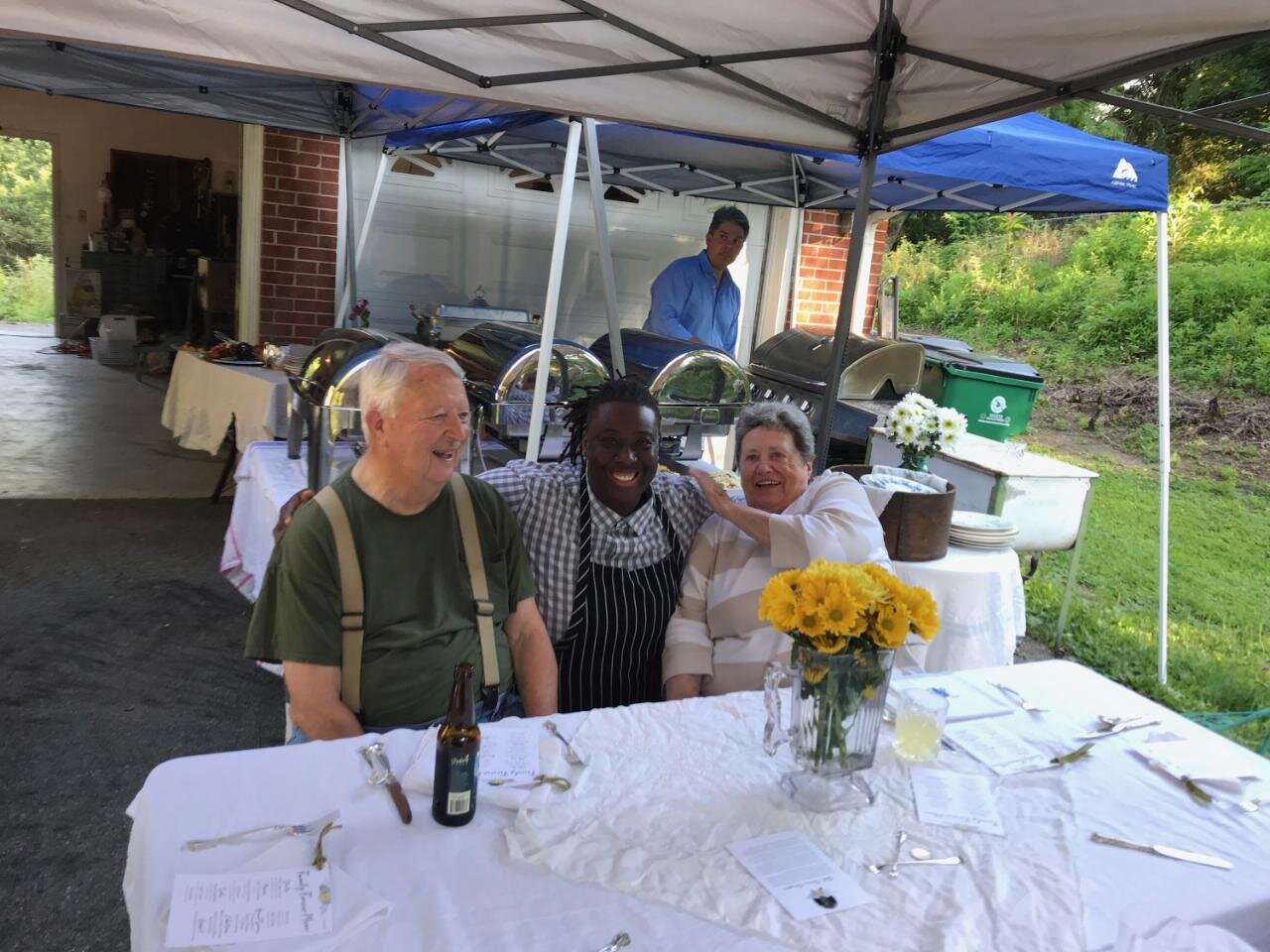
Celebrity Chef T cooks for the Bakers
We've also been exposed to Plymouth Plantation's medicinal beds, which inspired us to plant our own medicinal garden, later influenced by my interest in the Anglo-Saxon Nine Herbs Charm. In Williamsburg, the espalier at the Governor's Palace and the hot beds at the Colonial Garden showed us ways to grow fruit horizontally as well as extend the growing season here in the Chicago area.
A Medieval herb garden in Angiers, wattle fencing at Hampton Court, and watching an experimental archaeologist reproducing a Mousterian point in Tursac were my own “this means something” Richard Dreyfuss experience, which eventually led me to historic reenactment with Regia Anglorum. One of the most respected reenactment societies, Regia is populated by some of the most learned, intriguing, talented, and insane people I've ever met — they know who they are! Many are gifted artisans whose knowledge of woodworking, textiles, leather, metal, and stone have greatly influenced what I cherish. For me, there's tremendous value in making things with my own hands — and talking about it while having a bracing drink in front of a fire!
And while it took some time for Amy to come around to donning a full Anglo-Saxon dress and wimple, she joined me at the largest historical re-enactment event in the world at Detling in the UK. She loved time spent without the modern trappings of the 21st century, chopping vegetables, making chive butter with her own hands, raking around stooks of wheat, and supporting various townspeople in the Saxon/Scandinavian community we were re-creating.
A natural result of our membership in Regia is my exploration of green woodworking, which has spanned everything from making my own tent pegs from sweet chestnut, kuksa cups from cherry, spoons from willow, tool handles from ash, and more.
These practices connect us to our past, ground us in life at its simplest, and bring us in closer contact with the earth and soil.

Making nails... round, no… flat, no… round…

My buddies: shavehorse and drawknife

Wychurst chestnut tent pegs

"Another project, Boolo?"
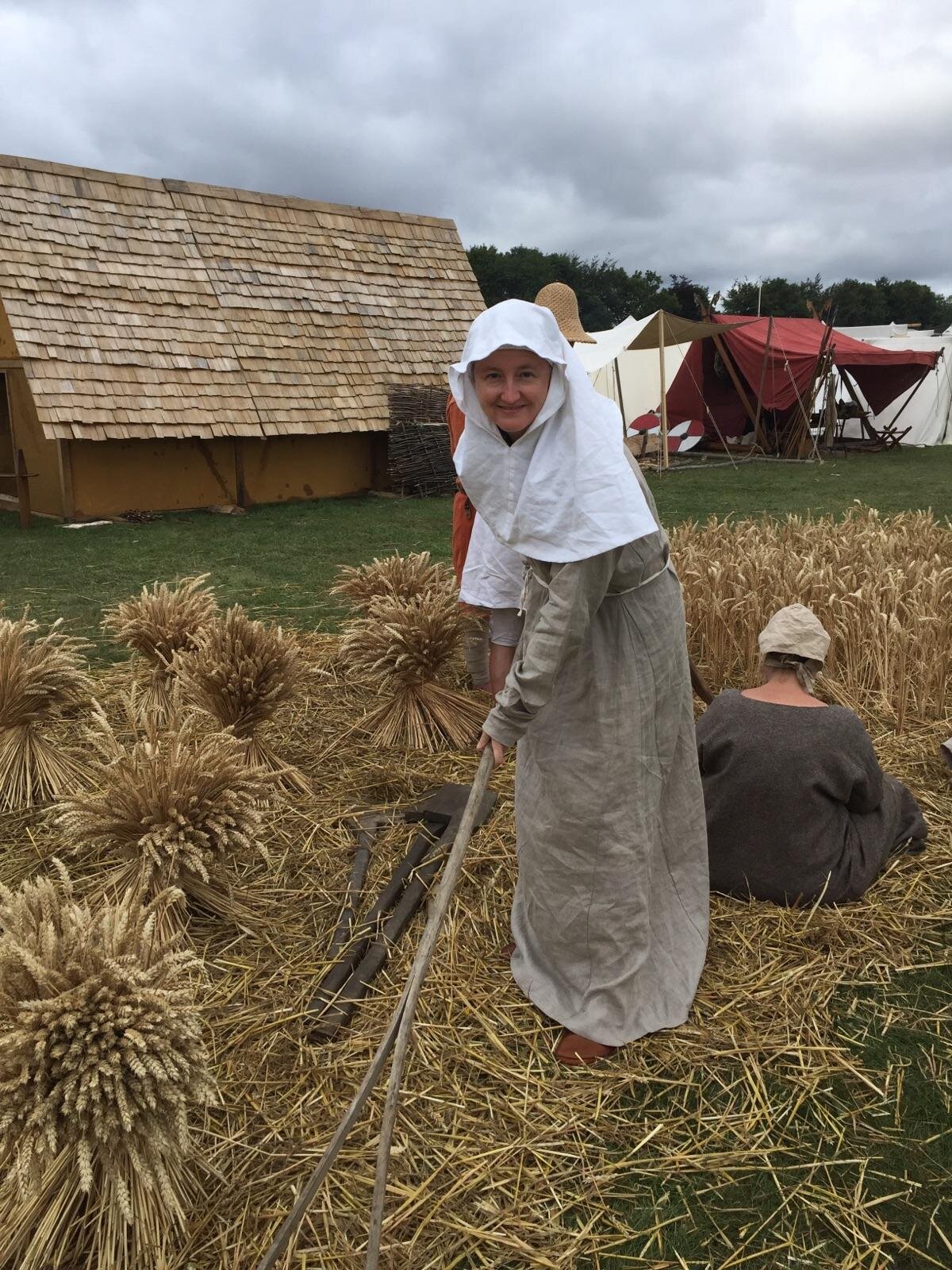
Raking 'round the stooks

Chive butter made with 9th-century technology: her own hands
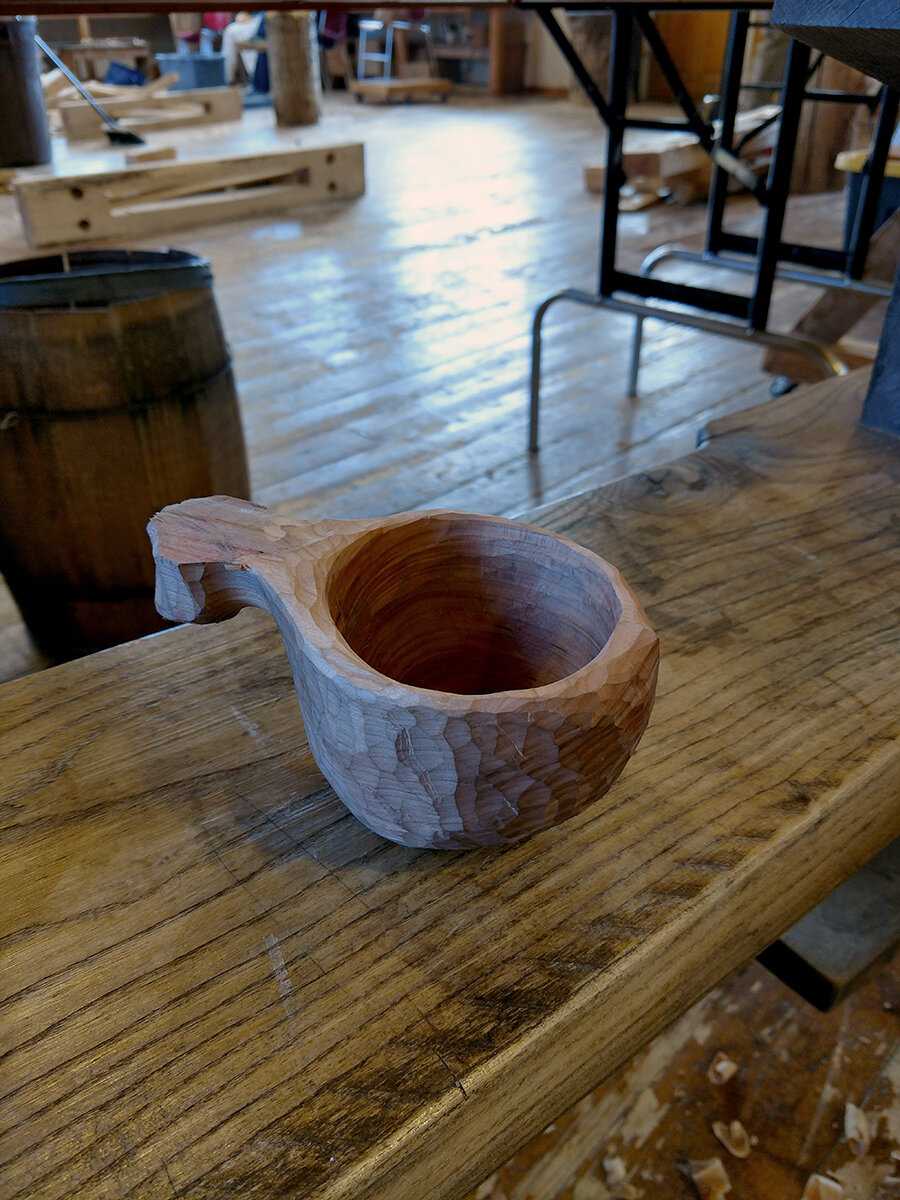
Kuksa cup roughed out


